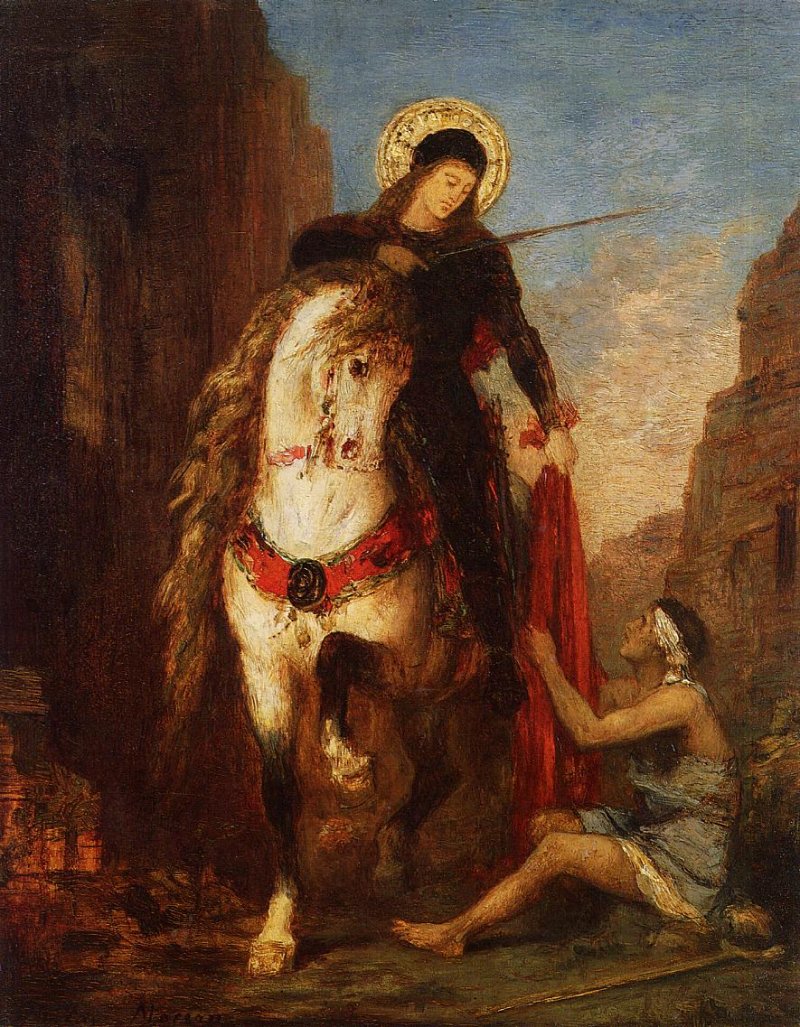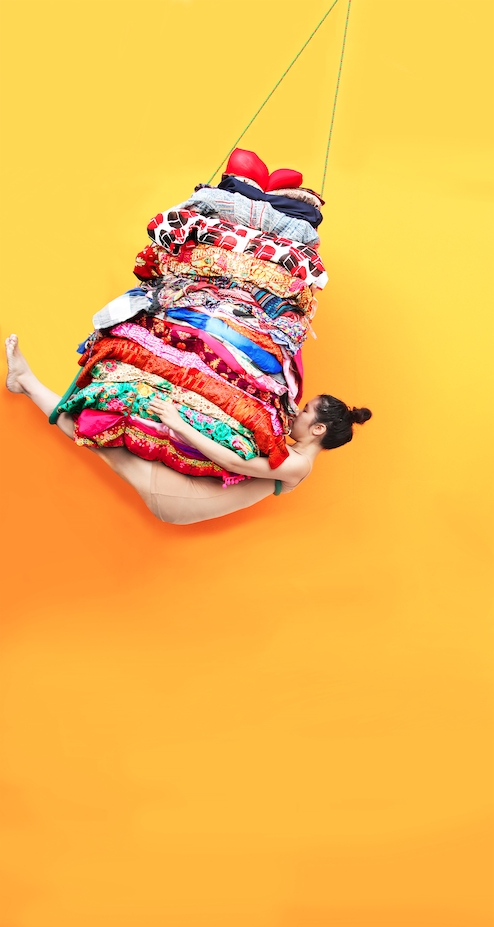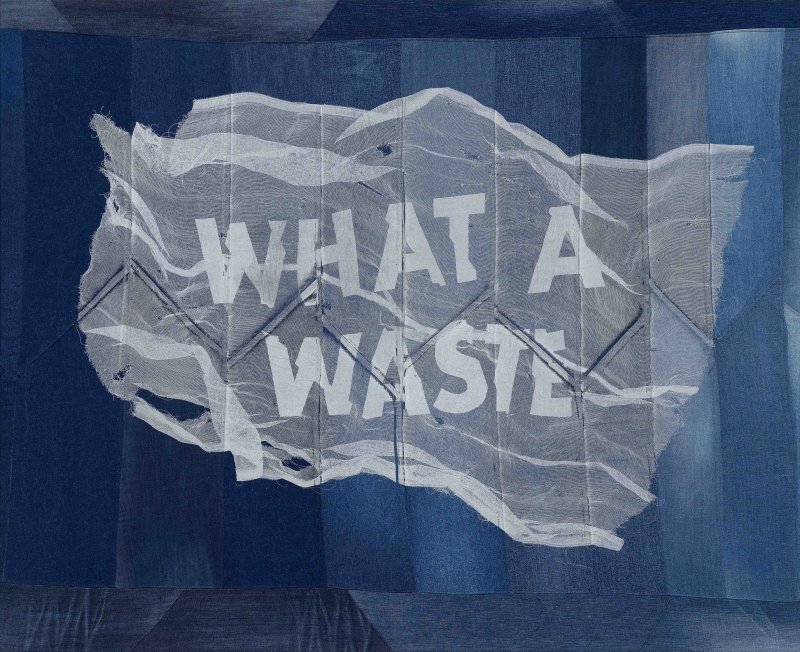art4biodiversity: Through a digital art exhibition, mirroring your environmental impact
How often do you eat animal-based products? What is your favorite kind of trash to recycle? According to your personal preference, what is the optimal temperature for a museum during winter?
These are the kinds of questions that can be answered when you visit the digital exhibition designed by art4biodiversity. The project aims to take a humorous look at the notion of the carbon calculator, while exploring the role of art in tackling the climate crisis.

Unsurprisingly, the company behind this artistic-environmental quiz is a not-for-profit company promoting artistic initiatives aimed at provoking meaningful and sustainable ecological action. This proposal from art4biodiversity, whose guiding principle is "to bring together scientific knowledge, cultural discourse and real action", sums up these ambitions perfectly.
An interactive digital exhibition
This calculator uses the 'traditional' format of a quiz on your daily practices (food, transport, recycling, etc.) and their measurement in terms of CO2 emissions. Here, however, the quiz takes you through a digital art exhibition where specific works reflect your impact on the environment.
Depending on your answers to each question, you are presented with a different work of art. For example, the question "How do you wear your values on your sleeve?” - which deals with the issue of clothing - each possible answer introduces you to a work of art that echoes what you have chosen. For example:
I give some of my best clothes away, the Calculator takes you to a painting by Gustave Moreau showing Saint Martin giving his cloak to a poor man. This biblical figure, which conveys the values of sharing and solidarity, could be seen by today's viewers as an incentive to show particular concern for those who will suffer - or are already suffering - the consequences of climate change.

When I think of clothes, I think of work: sewing, cleaning, ironing, reveals a digital image by Kawita Vatanajyankur, showing a woman crushed by the weight of a pile of textiles as high as she is. In it, the Thai artist evokes not only the reality of women's work in textile companies in South-East Asia, but also the effects of over-consumption of clothing...

Speaking of value, do you have my blazer? I had to leave it at last week's vernissage, and it reveals an image by Raul Walch that also raises the issue of textile pollution. Against a background of denim patchwork - a globalised garment if ever there was one! - the remains of a plastic bag bear the slogan "What a Waste". Through this work, the artist denounces the excesses of fast fashion and mass production.

Some of the artists featured in the Calculator are well-known figures from the history of art (Giuseppe Arcimboldo, Pierre Bonnard, Honoré Daumier, Vincent van Gogh, Francisco de Goya, Gustave Moreau, Sosus of Pergamon and Leonardo da Vinci), but the majority of the works presented are the creations of contemporary artists. These include Ravi Agarwal, Irwan Ahmett & Tita Salina, Marcela Armas, Chow and Lin, Abraham Cruzvillegas, Tadashi Kawamata, Willem van Haecht, Wolf von Kries, Sam Lewitt, Hermann Nitsch, Ahmet Ogut, Kawita Vatanajyakur, Raul Walch, Paul Walde and Ai Wei Wei.
A descriptive text provides more information on each of the works and situates them in the context of the quiz, but also of environmental art and art history in general.
Where did the idea of calculating the carbon footprint come from?
You probably don't realise how paradoxical it sounds, but it was British Petroleum, one of the ten biggest oil companies on the planet, that came up with the concept of the carbon footprint in the 1980s. Yet the reasoning behind this notion is crystal clear: by encouraging people to see climate change as the consequence of individual actions that are more or less virtuous (and often less rather than more, since the mere fact of being a citizen of a so-called developed country automatically implies a higher concentration of CO2 emissions), we encourage them to look at the issue at a personal level and thus avoid criticism of the collective responsibilities of states and/or multinationals in the current climate crisis. This diversion, shamelessly playing on individual guilt, works wonders, and BP's communications operation can be considered a real success of its kind.
Mark Kaufman summed up the genesis of this concept perfectly in his article on The carbon footprint sham:
"British Petroleum, the world's second largest non-state oil company, with 18,700 service stations worldwide, hired PR professionals Ogilvy & Mather to promote the idea that climate change is not the fault of an oil giant, but of individuals. It was here that British Petroleum, or BP, first promoted and successfully popularised the term 'carbon footprint' in the early 1980s. The company unveiled its 'carbon footprint calculator' in 2004 so that everyone could assess the extent to which their daily lives - getting to work, buying food and (sadly) travelling - were largely responsible for global warming.”
With a sometimes biting sense of humour, the art4biodiversity Calculator turns this self-centred calculation approach on its head in order to promote works that express a critical discourse on climate issues. There are no good or bad scores here: each completed questionnaire is used to create a unique artistic compilation based on the answers given.
Once you've answered at least 6 questions, you can print out a summary of your answers in the form of a document offering a number of solutions. The images of the works of art are accompanied by links to information resources, so that anyone wishing to pursue their thoughts can be given a bit of an education…
List of artists
Ravi Agarwal, Irwan Ahmett & Tita Salina, Giuseppe Arcimboldo, Marcela Armas, Pierre Bonnard, Chow and Lin, Abraham Cruzvillegas, Honoré Daumier, Vincent van Gogh, Francisco de Goya, Willem van Haecht, Tadashi Kawamata, Wolf von Kries, Sam Lewitt, Gustave Moreau, Hermann Nitsch, Ahmet Ogut, Sosus of Pergamon, Kawita Vatanajyakur, Leonardo da Vinci, Raul Walch, Paul Walde, Ai Wei Wei.